23, 24 and 25 February 2024
Nepal Tourism Board, Pradarshani Marg (Bhrikuti Mandap), Kathmandu
Synopses
Day 1: 23 February 2024 (Friday)
Hospital (59″) (2016)
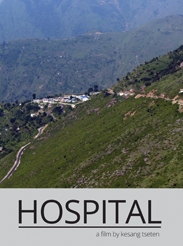
This is an unusually intimate portrait of a state-run hospital in one of Nepal’s most remote and poorest districts of Kalikot in West Nepal. For medical personnel, it is the kind of posting that is to be avoided or to quickly escape from. In capturing the daily goings-on of the hospital, the film affirms that, no matter what, individuals make a difference in peoples’ lives. Besides showing the hospital’s caring of the sick, however, the film offers a revealing glimpse into how ordinary Nepalis cope with their lot, without drama, and often with humanity and humor, while laying bare some grimmer fissures of Nepali social reality.
 Who Will Be a Gurkha (86″) (2012)
Who Will Be a Gurkha (86″) (2012)
Whosoever fought alongside or against these men feared or derided them, but all were smitten by them. ‘Bravest of the brave,’ and loyal – ‘never had a country more faithful friends;’ ‘gentle and jolly and yet the ‘deadliest natural-born killers,’ as a British officer put it, intending it a term of endearment.
The Gurkhas began soldiering for the British colony in India 200 years ago, following a war in which the two were enemies. Impressed with the raw fighting prowess of the khukuri-wielding Nepalis, who seemed not to fear death, Britain began recruiting them. In the following centuries, these soldiers have seen more continuous fighting than any in the world, deployed in one war after another, from Borneo, Burma and Africa, to France, Italy, the Falklands and, more recently, Iraq and Afghanistan.
The recruitment of the Gurkhas has been a subject of much fascination, this despite the fact that the number of Gurkhas recruited for the British Army has dwindled from the 200,000 who fought during the Second World to a couple hundred. Young Nepalis, however, continue to be lured to become ‘lahureys’, the common name for ‘Gurkhas’, named after Lahore, then the conscripting base.
Today’s potential recruits are not rustic hill boys – a far cry from when conscriptors combed the hills for raw material, ‘the better if illiterate’ – but a new generation of urban=based Nepalis with a school or higher education, attracted by wages equaling British soldiers now, undergoing one of the most grueling tests, with some unique elements. Selection also means partaking of the myth and glamour of the Gurkhas, adventure and danger, in spite of the very real prospect of dying in battlefields in Afghanistan and Iraq.
The recruitment, carried out with meticulous planning and execution in the confined setting of the British Gurkha Camp in Pokhara, within sight of Macchapuchare, Annapurnas and Dhaulagiri, presents an elaborate modern-day ritual born in the days of Empire. It shows the processes of the army as an institution, except that these young men are joining someone else’s army. A fascinating disjunction of two cultures. The film offers a unique multi-layering of people, institutions and societies, British and Nepali, officers and applicants, and their multi worlds.
Day 2: 24 February 2024 (Saturday)
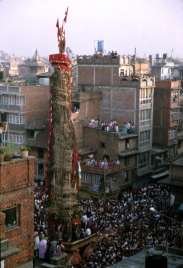 On the Road with the Red God: Machhendranath (72″) (2005)
On the Road with the Red God: Machhendranath (72″) (2005)
Every 12 years, impassioned devotees pull a 65-feet tall unwieldy chariot in the Kathmandu Valley, its rider an enigmatic god worshipped by Hindu and Buddhist, on a months-long journey proceeded by abundant ritual and animal sacrifice.
The enterprise calls for extreme cooperation and rigorous observance of ritual in the building, sanctification and pulling of the chariot. But the jatra (festival) is an arena of gritty reality, where participants vie for everything from a share of ritual meat, to status and proximity to the god. The chariot teeters, as does the community, between chaos and order, conflict or solidarity. Thus, every 12 years, the same question: will the journey succeed?
In the midst of elaborate ritual, the jatra’s human face is the Buddhist tantric priest Kapil Muni Vajracharya. He serves the Machhendranath deity who was, according to myth, stolen from a demoness from a far-off land, to save the Kathmandu Valley suffering from a long drought. Kapil must perform rituals, such as directing animal sacrifices, to ward off the demoness who is intent on retrieving her son. Kapil too was separated from his mother as an infant with whom he yearns to be reunited. But, unlike the demoness, Kapil’s mother has not attempted to find him.
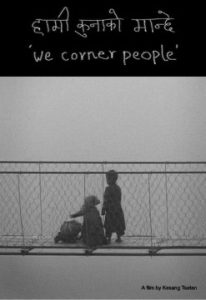 We Corner People (50″) (2007)
We Corner People (50″) (2007)
They call themselves ‘corner’ people. No settlement lies beyond their high hills. The poorest among them are sub-subsistence; there is no electricity, and not a single shop. Children attend a 3-room school that goes up only to class 3; after that they must walk 4 hours daily. Villagers walk that distance just to buy chili or salt and to sell their bamboo weaving, their only means of a cash income.
Now a bridge comes to this remote village in Rasuwa District. The bridge will make life easier for villagers; and it will placate fear. One of the rivers straddling the village swept away a young bride when it inexplicably swelled. The event haunts the village.
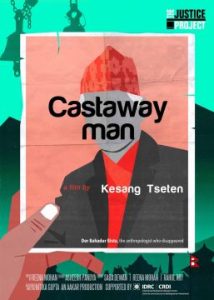 Castaway Man (82″) (2015)
Castaway Man (82″) (2015)
Dor Bahadur Bista, one of Nepal’s most controversial intellectuals in modern times, disappeared without trace in 1996. Beginning as a field assistant to well-known Austrian anthropologist Fuerer Haimendorf, with whom he had strained relations, he was largely self-trained. He wrote several books, among them People of Nepal (1964) and the controversial Fatalism and Development: Nepal’s Struggle to Modernise (1990).
Fatalism and Development, written in English, argued Nepal didn’t develop because of Bahunbaad or Brahminism, by which he meant the values of fatalism and hierarchy, imported from India’s caste culture, which had eclipsed local more egalitarian value systems. Himself a high caste, his views created acrimony, particularly among other high castes. He moved to the remote western district of Jumla, where he established the Karnali Institute to put into practice his beliefs and challenge the Kathmandu elite.
His development activities in education, agriculture, electrification, road building, and espousal of his views won local hearts, but also some enemies. His disappearance, or his death, was caused by high-caste villagers; his alleged affair with a young woman who he was mentoring; and that he gone to Haridwar, by the Ganges River in North India, to become a sadhu or renunciate.
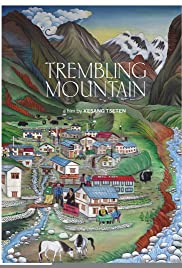 Trembling Mountain (83″) (2016)
Trembling Mountain (83″) (2016)
On April 25, 2015 Nepal was hit by a quake measuring 7.9 on the Richter Scale. Among the worst hit in Nepal’s 2015 earthquake was the prime trekking destination of Langtang. A glacial collapse caused an avalanche of rock, ice and mud, resulting in an airblast, equal to half the force of the Hiroshima atom bomb.
The 400-odd survivors, out of a community of 700, were evacuated from the highland, to a camp on the grounds of a Buddhist monastery in Kathmandu until their resettlement six months later.
The film shows the personal suffering wrought by the calamity, by ‘story tent’ testimonies interspersed with and serving as thematic and counterpoising elements to the activities of resettlement. While true that the return of tourists will bring back their livelihoods, is the Langtangbas’ belief denial of the enormity of their loss? Or does it reflect the changes of a people caught between an overwhelming dependence on the without, and the eclipse of their traditions?
While the foreground of the film looks at the impact of the disaster on the Langtang folks and the challenge of resettlement, the film suggests this to be the underlying conflict, just because Langtang happens to be endowed with exceptional natural beauty that has won it place on the global tourism map.
In showing the much dwindled community’s response to the disaster, until their resettlement a year later, the film reveals the transformation, profound and yet often taken for granted, that has been sweeping the Himalaya over the last decades.
Day 3: 25 February 2024 (Sunday)
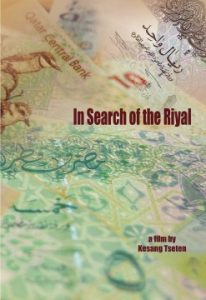 In Search of the Riyal (75″) (2012)
In Search of the Riyal (75″) (2012)
Nepal has rapidly become a pipeline of cheap labour for the Gulf in the last two decades. Migration has emptied Nepal’s villages of its young men, its farm fields tended by the elderly and women or left fallow. This film is about young men who set out to escape their family woes and grinding poverty, albeit at a high cost, to earn wages of US$5 to 7 a day in the alien and stultifying conditions of the Qatari desert. Theirs is often a true test of resilience and luck.
The film shows a glimpse of gritty migrant conditions, rarely permitted to be filmed by the Gulf states, with its well-known sensitivity to outside criticism of its labour policies and practices. The stories of disillusionment and, occasional, transformation, capture the essence of the Nepali migrant experience, and the enormity of his journey.
The Desert Eats Us (68″) (2011)
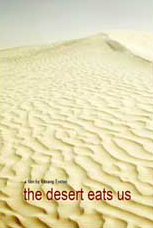
Starting in the ’90s, fear of being caught in the crossfire between state security forces and Maoist insurgents and a failing economy propelled Nepalis to sell themselves as cheap labour in the Gulf. Migrant worker earnings sustained one out of every three households and remittances propped up the country.
The film provides a rare glimpse of the migrant experience in Qatar, where they outnumber natives by 3 to 1. Their struggle to endure long working hours in stultifying heat, burdened by loans and high expectations of home, and the upheaval and fractures of emotional life is overwhelming, unhinging the compass of their lives.
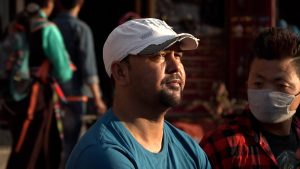 A Migrant Speaks (28″) (2022)
A Migrant Speaks (28″) (2022)
Dalbir Singh Baraili is ‘circular’ migrant, caught between going abroad to better his life and his longing to be with his family. An ex-soldier, he had been working in the UAE for 10 years when he resigned to return to his village in Ramechaap (captured in the film In Search of the Riyal,2009). But work in Nepal paid a fraction of his earnings abroad, so he went abroad again.
During his time in the UAE, Dalbir gained a reputation for his ghazal writing; he also ran a youtube channel on literature for the Nepali diaspora. Back home, his earnings enabled his family to move to the capital Kathmandu, a daughter’s enrollment at a university and a son to study in the UK.
In 2019, he unexpectedly lost his job in the UAE. Rather than take a much lower-paid job as a guard, he is trying to make his youtube channel commercially viable as well as becoming a videographer of weddings and functions. At 50, Dalbir has finally severed the cycle of migration in which he was seemingly entrapped, but his struggle to maintain his family’s enhanced lifestyle is humbling.
 Diversity Plaza (69″) (2023)
Diversity Plaza (69″) (2023)
Up to 75,000 Himalayans live in Jackson Heights in Queens, the most linguistically diverse zip code in the US and possibly the most diverse urban spot in the world, as nail salon workers and nannies, restaurant and grocery workers, Uber drives and entrepreneurs, trying to find the right balance between their former tradition even as they shape new lives as Americans.
